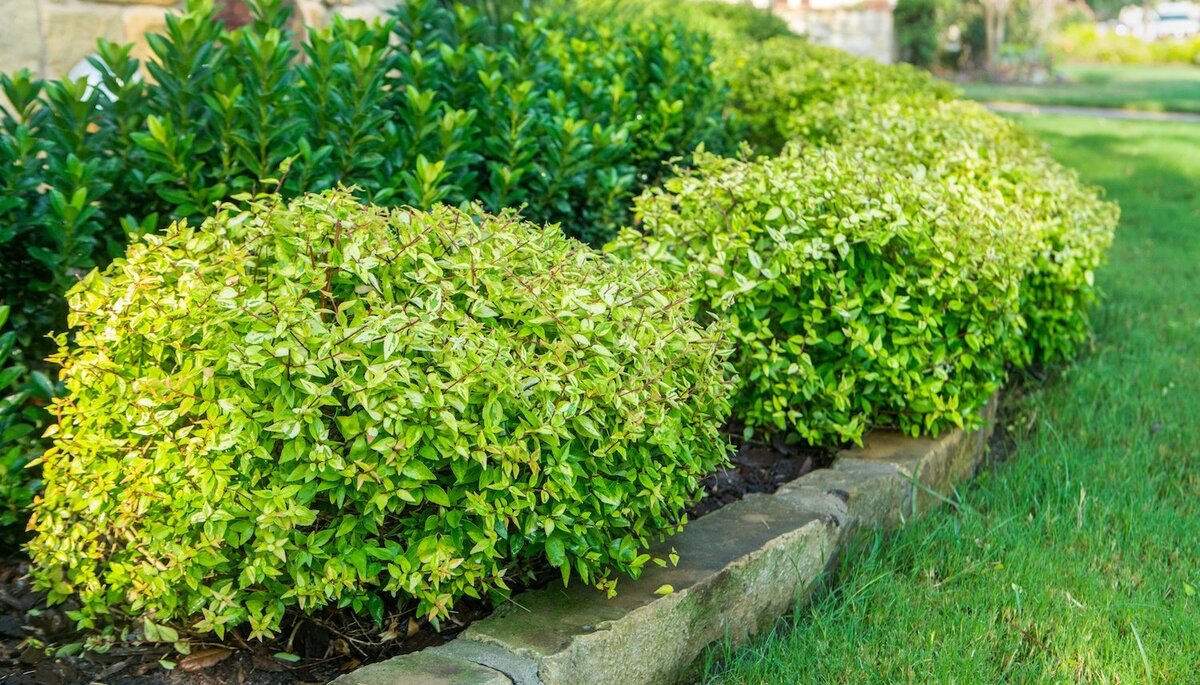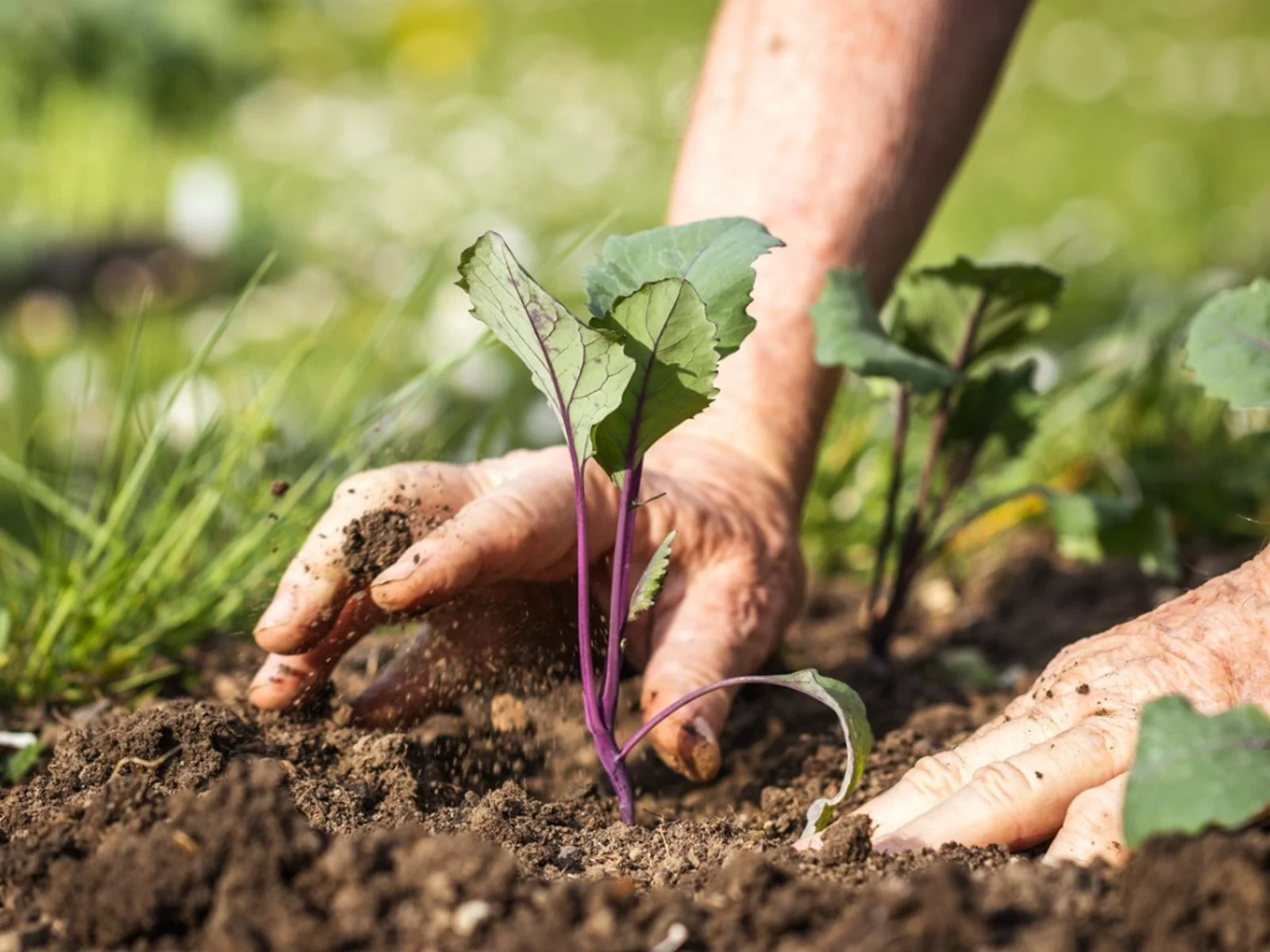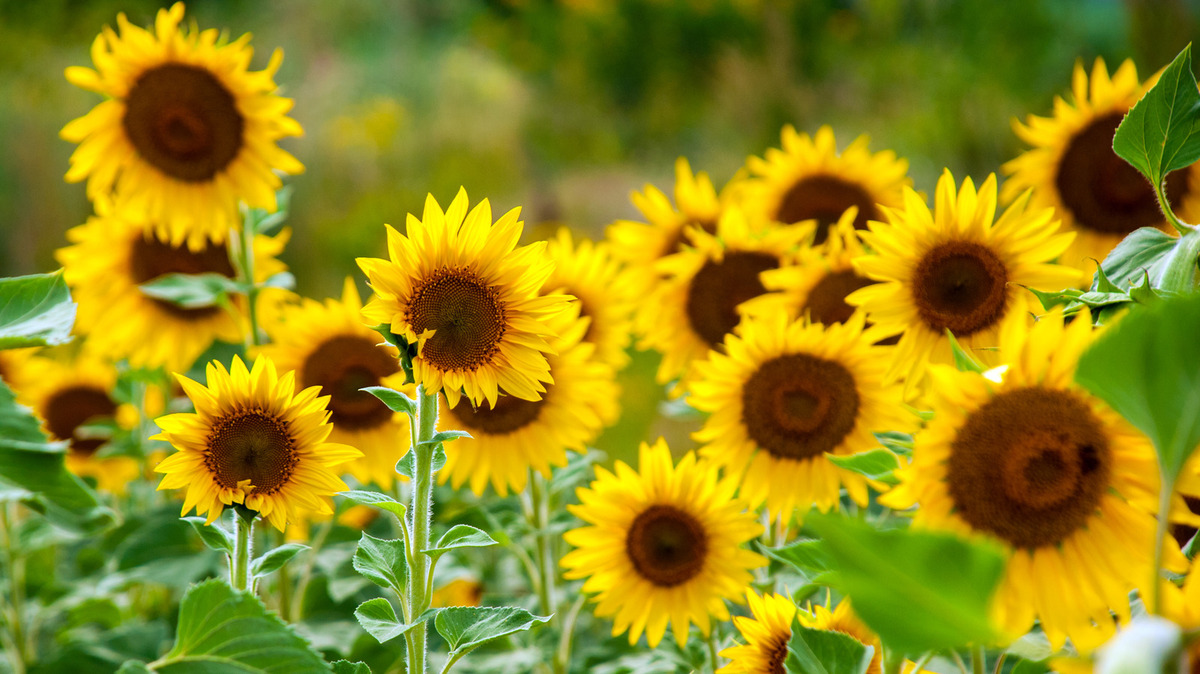Home>Gardening Techniques>When To Plant In Greenhouse


Gardening Techniques
When To Plant In Greenhouse
Modified: January 22, 2024
Find out when to plant in a greenhouse for seasonal gardening. Maximize your harvest by understanding the best times to start your greenhouse crops.
(Many of the links in this article redirect to a specific reviewed product. Your purchase of these products through affiliate links helps to generate commission for Chicagolandgardening.com, at no extra cost. Learn more)
Table of Contents
Introduction
Welcome to the world of seasonal gardening! If you’re passionate about plants but want to extend your growing season and protect your precious plants from harsh weather conditions, then greenhouse gardening is the perfect solution for you. Greenhouses offer a controlled environment that allows you to create the ideal conditions for your plants to thrive.
Greenhouse gardening provides numerous benefits over traditional outdoor gardening. With a greenhouse, you have the flexibility to grow a variety of plants regardless of the season. Whether it’s spring, summer, fall, or even winter, you can create a microclimate within your greenhouse that mimics the ideal growing conditions for your plants.
Not only does a greenhouse protect your plants from extreme temperatures, frost, and pests, but it also offers the opportunity to start your gardening season earlier and extend it later into the year. This means you can enjoy fresh produce or beautiful flowers long after the traditional growing season has ended.
Before delving into the details of when to plant in a greenhouse, it’s crucial to understand the factors that influence the success of greenhouse gardening. Factors such as temperature, light, ventilation, and humidity need to be carefully managed to create the optimal growing environment for your plants.
In this comprehensive guide, we will explore the recommended times for planting in a greenhouse, the types of plants suitable for greenhouse gardening, and the techniques to ensure your greenhouse plants thrive. Let’s dive in and unlock the wonders of seasonal gardening in a greenhouse!
Benefits of Planting in a Greenhouse
Planting in a greenhouse offers a multitude of advantages that make it an attractive option for both beginner and experienced gardeners. Let’s explore some of the key benefits:
- Extended Growing Season: One of the significant benefits of greenhouse planting is the ability to extend the growing season. With a greenhouse, you have control over the temperature, which allows you to start planting earlier in the spring and continue growing well into the fall. This means you can enjoy fresh produce for a longer period of time.
- Protection from Harsh Weather Conditions: Greenhouses provide a protective shield against extreme weather conditions such as frost, excessive heat, heavy rain, and strong winds. By creating a controlled environment, you can safeguard your plants from these damaging elements, ensuring their health and vitality.
- Pest and Disease Control: Greenhouses provide a physical barrier that helps to keep pests, diseases, and unwanted critters away from your plants. This reduces the need for chemical pesticides and allows you to cultivate your plants in a more natural and organic manner.
- Optimal Growing Conditions: With a greenhouse, you have the ability to control the temperature, humidity, and light levels. This means you can create the ideal growing conditions for different types of plants, regardless of the external weather. You can customize the environment to suit the specific needs of your plants, ensuring optimal growth and yield.
- Year-round Gardening: Greenhouses enable year-round gardening, even in colder climates. By providing a sheltered and controlled environment, you can continue gardening in the winter months and enjoy a constant supply of fresh produce throughout the year.
These are just a few of the many benefits of planting in a greenhouse. Whether you’re a vegetable gardener looking to grow your own food or a flower enthusiast wanting to create a beautiful display, a greenhouse is an investment that brings rewards and endless possibilities. With proper care, maintenance, and attention to detail, you can enjoy the benefits of greenhouse gardening for years to come.
Factors to Consider Before Planting in a Greenhouse
Before diving headfirst into greenhouse gardening, it’s essential to consider a few key factors to ensure the success of your plants. Here are some factors you should take into account:
- Location: Choose a suitable location for your greenhouse. It should be placed in an area that receives ample sunlight throughout the day. Avoid areas with too much shade or obstructions that may block the sunlight from reaching your plants.
- Size and Design: Consider the size and design of the greenhouse. Assess your gardening needs and space availability to determine the appropriate size. Take into account factors such as the types of plants you plan to grow, the number of plants, and additional space for paths and work areas.
- Temperature Control: Greenhouses require proper temperature control. Invest in a thermometer to monitor the temperature inside the greenhouse. You may also need a heating system for colder months and ventilation options to regulate the temperature in warmer months.
- Lighting: Adequate lighting is crucial for the growth of your plants. Ensure your greenhouse receives ample natural sunlight. If needed, consider supplemental lighting options, such as grow lights, to provide consistent light during dark or cloudy periods.
- Watering and Drainage: Proper watering and drainage systems are essential for greenhouse gardening. Ensure your greenhouse has access to a water source and consider installing a drip irrigation system to provide consistent and efficient watering to your plants. Additionally, make sure the greenhouse has proper drainage to prevent waterlogged soil.
- Pest and Disease Management: Proactively manage pests and diseases in your greenhouse. Regularly inspect your plants for any signs of pests or diseases and take necessary measures, such as using organic insecticides or implementing integrated pest management techniques.
- Organization and Maintenance: Keep your greenhouse organized and well-maintained. Regularly clean the greenhouse to prevent the buildup of pests, diseases, and debris. Maintain records of your planting schedule and keep track of the progress of your plants.
Considering these factors before planting in a greenhouse will help you create an optimal growing environment for your plants. By carefully planning and addressing these considerations, you can set the stage for successful greenhouse gardening and enjoy bountiful harvests or vibrant flowers throughout the growing season.
Recommended Times for Planting in a Greenhouse
In greenhouse gardening, timing is key. Knowing the optimal times to sow and transplant your plants can greatly influence their growth and productivity. While the specific planting times may vary depending on your location and the specific plants you are growing, here are some general guidelines to help you get started:
Early Spring: Early spring is the perfect time to start planting cold-hardy vegetables and flowers in your greenhouse. These include crops like lettuce, spinach, kale, radishes, peas, and pansies. These plants can tolerate cooler temperatures and will thrive in the controlled environment of a greenhouse.
Mid to Late Spring: As the weather warms up, you can start planting warm-season vegetables like tomatoes, peppers, cucumbers, and zucchini. These plants require higher temperatures to germinate and grow, making the spring season ideal for their development.
Summer: In the summer months, you can continue to plant warm-season crops and also sow quick-growing vegetables like salad greens, herbs, and summer flowers. This is also a great time to plant heat-loving perennials and tropical plants, as the greenhouse can provide the heat and humidity they need to thrive.
Fall: As the summer comes to an end, you can plant cool-season crops again in preparation for the fall harvest. This includes vegetables like carrots, beets, cabbage, and Swiss chard. Additionally, you can start sowing cool-season flowers like pansies, violas, and ornamental kale to add color to your greenhouse.
Winter: In regions with milder winters, you can continue growing cold-tolerant vegetables such as leafy greens and root crops in the greenhouse. However, if you’re facing harsh winter conditions, it’s best to use the greenhouse for overwintering plants or starting seeds indoors for the upcoming season.
Remember to take into account the specific requirements of each plant, including their preferred temperature and light levels, to determine the best planting times. Additionally, consider the length of the growing season and the time needed for plants to mature when planning your greenhouse planting schedule.
By following these recommended planting times and aligning them with your local climate, you can maximize the productivity of your greenhouse and enjoy a continuous supply of fresh and beautiful produce throughout the year.
Vegetables Suitable for Greenhouse Planting
Greenhouse gardening provides an ideal environment for growing a wide variety of vegetables. The controlled conditions in a greenhouse allow you to extend the growing season and cultivate heat-loving and cold-tolerant vegetables. Here are some popular vegetables that thrive in a greenhouse:
- Tomatoes: Tomatoes are among the most popular greenhouse vegetables. The warm and consistent temperature of a greenhouse provides the perfect conditions for tomatoes to flourish. Look for varieties specifically bred for greenhouse growing, such as “Celebrity” or “Burpee’s Big Boy.
- Cucumbers: Cucumbers thrive in the warm and humid environment of a greenhouse. Look for English cucumber varieties like “Telegraph” or smaller pickling cucumbers for greenhouse cultivation. Trellising your cucumber plants will optimize space and promote better fruit quality.
- Peppers: Bell peppers and chili peppers are well-suited for greenhouse planting. They require warm temperatures and ample sunlight to produce an abundant crop. Varieties like “California Wonder” or “Jalapeno” are popular choices for greenhouse cultivation.
- Leafy Greens: Greenhouse gardening allows you to grow leafy greens year-round. Lettuce, spinach, kale, and Swiss chard thrive in the controlled environment of a greenhouse. Succession planting will ensure a continuous harvest of fresh and nutritious greens.
- Herbs: Many herbs, such as basil, parsley, cilantro, and dill, perform exceptionally well in a greenhouse. The consistent temperature and protection from the elements contribute to their healthy growth and superior flavor. Plant herbs in containers or raised beds for convenience and ease of maintenance.
- Radishes: Radishes are quick-growing and can be harvested in as little as 3-4 weeks. They are well-suited for greenhouse gardening as they prefer cooler temperatures. Varieties like “Cherry Belle” or “French Breakfast” are popular choices for greenhouse cultivation.
- Carrots: Carrots can be successfully grown in a greenhouse, even during the cooler months. Choose varieties with shorter maturity times, such as “Little Finger” or “Paris Market”, to ensure a timely harvest. Optimum soil conditions and adequate spacing are crucial for carrot cultivation.
- Beans: Bush beans and pole beans can be grown in a greenhouse, providing a fresh supply of tender and flavorful beans. Look for compact or dwarf varieties suitable for greenhouse cultivation. Proper trellising and support are essential for vertical growth.
These are just a few examples of the vegetables that thrive in greenhouse conditions. Remember to consider the specific requirements of each plant, including temperature, light, water, and spacing, to ensure optimal growth and productivity. With a well-planned greenhouse setup and proper care, you can enjoy a bountiful harvest of homegrown vegetables throughout the year.
Flowers Suitable for Greenhouse Planting
Greenhouse gardening is not limited to just vegetables; it’s also an excellent way to cultivate a stunning array of flowers. The controlled environment of a greenhouse offers the perfect conditions for many flower varieties. Here are some popular flowers that thrive when planted in a greenhouse:
- Geraniums: Geraniums are versatile and easy to grow in a greenhouse. They come in a wide range of colors and are known for their vibrant blooms and attractive foliage. Geraniums prefer warm temperatures and thrive in the consistent conditions of a greenhouse.
- Orchids: Orchids are renowned for their elegant and exotic flowers. Greenhouses provide the perfect environment to recreate the tropical conditions that orchids love. From Phalaenopsis to Cymbidiums, there are numerous orchid varieties available for greenhouse cultivation.
- Roses: Greenhouse gardening allows you to grow roses year-round and protect them from harsh weather conditions. Roses grown in a greenhouse tend to have larger and more vibrant blooms. With proper pruning, fertilization, and disease control, you can enjoy a continuous display of beautiful roses.
- Pansies: Pansies are cool-season flowers that thrive in the controlled environment of a greenhouse. They come in a wide range of colors and are known for their cheerful blossoms. Pansies can be started from seeds or transplants and provide a splash of color to your greenhouse during the cooler months.
- Snapdragons: Snapdragons are prized for their tall spikes of vibrant flowers that resemble the face of a dragon. They perform exceptionally well in the controlled environment of a greenhouse, producing an abundance of blooms. Snapdragons come in various colors, adding a vertical element to your greenhouse display.
- Sweet Peas: Sweet peas are delightful, fragrant flowers that thrive in cooler temperatures. Greenhouse gardening allows you to enjoy their enchanting scent and delicate blossoms even during the winter months. These climbers require support, so trellising them will enhance their growth and appearance.
- Nasturtiums: Nasturtiums are easy to grow and add a cheerful pop of color to your greenhouse. These edible flowers come in vibrant shades of orange, yellow, and red. They are not only aesthetically pleasing but also make a tasty addition to salads and other culinary creations.
- Impatiens: Impatiens are popular for their vibrant flowers and shade-tolerant nature. They thrive in the partially shaded conditions of a greenhouse. These versatile and easy-to-grow flowers bring a burst of color to your greenhouse, creating a lively and inviting atmosphere.
These are just a few examples of the flowers that flourish in a greenhouse environment. Remember to provide the appropriate amount of water, light, and temperature for each specific flower variety. With careful planning and attention to their needs, you can create a breathtaking display of flowers in your greenhouse throughout the year.
Techniques for Successful Greenhouse Planting
To ensure a bountiful and thriving greenhouse garden, it’s essential to employ proper techniques for greenhouse planting. Here are some key techniques to help you achieve success:
- Soil Preparation: Start with high-quality soil that is rich in organic matter. Proper soil preparation is vital for the healthy growth of your plants. Ensure the soil is well-draining and has the right balance of nutrients.
- Temperature Control: Monitor and control the temperature inside your greenhouse. Proper ventilation, shading, and heating systems will help maintain an optimal temperature range for your plants. This is especially important during hot summer months and cold winter periods.
- Watering Techniques: Use efficient watering techniques to keep your plants properly hydrated. Avoid overwatering, as it can lead to root rot and other plant diseases. Consider using drip irrigation or a watering schedule that provides consistent moisture to your plants.
- Pest and Disease Management: Implement integrated pest management strategies to keep pests and diseases at bay. Regularly inspect your plants for common greenhouse pests such as aphids, whiteflies, and spider mites. Use organic pest control methods whenever possible to minimize chemical exposure.
- Proper Plant Spacing: Ensure that you provide adequate space between plants to allow for proper air circulation and minimize the risk of disease spread. Overcrowding can lead to increased humidity and promote the growth of fungal infections.
- Pruning and Training: Regularly prune and train your plants to maintain the desired shape and encourage better air circulation. This helps prevent diseases and allows for optimal light penetration. Additionally, pruning can redirect energy to essential plant parts, leading to better overall growth and yield.
- Fertilization: Provide appropriate nutrition to your plants through regular fertilization. Choose a balanced fertilizer or opt for organic alternatives. Consider using slow-release fertilizers to provide a steady supply of nutrients over a more extended period.
- Monitoring and Record Keeping: Keep track of your greenhouse activities by maintaining a gardening journal. Note important details such as planting dates, varieties, and any observations regarding growth and specific needs. Regularly monitor the progress of your plants to identify any issues promptly.
- Continual Learning: Stay curious and continue learning about greenhouse gardening. Experiment with different planting techniques, varieties, and growing methods to expand your knowledge and keep your garden exciting. Attend workshops, join gardening communities, and explore online resources for valuable insights and advice.
By implementing these techniques, you can create an environment in which your plants can thrive and produce an abundant harvest of fresh vegetables or a vibrant display of flowers. Successful greenhouse gardening requires diligence, attentiveness, and a continuous desire to learn and improve.
Conclusion
Greenhouse gardening opens up a world of possibilities for plant enthusiasts and allows for year-round cultivation, regardless of the external climate. By creating a controlled environment, you can extend your growing season, protect your plants from the elements, and maximize their growth potential.
Throughout this guide, we explored the benefits of greenhouse planting, including the ability to grow a wide variety of vegetables and flowers, protection from extreme weather, and the opportunity for year-round gardening. We discussed the factors to consider before embarking on greenhouse gardening, such as location, size, temperature control, and pest management.
We also examined the recommended times for planting in a greenhouse, providing guidelines for different seasons and specific plant varieties. From early spring vegetables to winter-hardy greens, greenhouse gardening offers opportunities to enjoy fresh produce and vibrant blooms throughout the year.
Additionally, we highlighted some of the vegetables and flowers that thrive in greenhouse environments, showcasing the diversity of plant options available for greenhouse gardeners. Whether you’re growing tomatoes, cucumbers, geraniums, or sweet peas, the controlled conditions of a greenhouse can support their growth and enhance their beauty.
To achieve success in greenhouse gardening, we discussed various techniques, including soil preparation, temperature control, watering techniques, pest management, pruning, and record-keeping. By employing these techniques, you can create an optimal growing environment and foster the health and productivity of your plants.
In closing, greenhouse gardening allows you to harness the power of nature while having greater control over the growing conditions. It offers a rewarding and fulfilling experience for both novice and experienced gardeners alike. So, whether you’re a vegetable enthusiast or a flower lover, unleash your creativity and dive into the world of seasonal gardening in a greenhouse. Happy planting!








